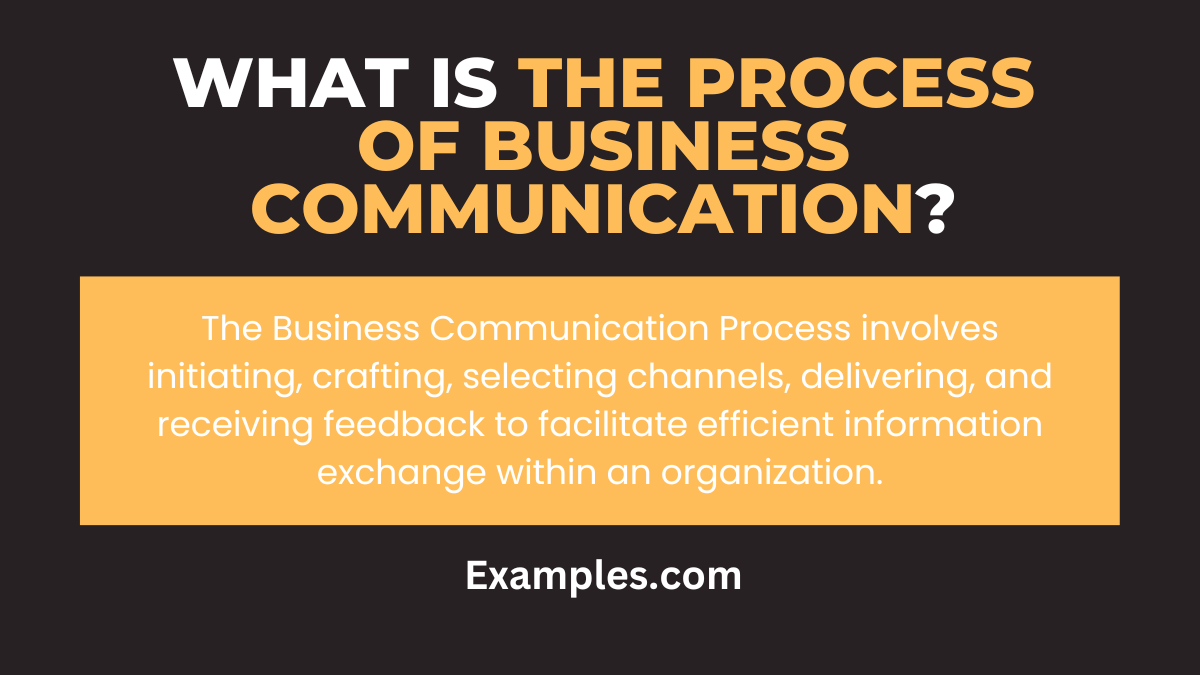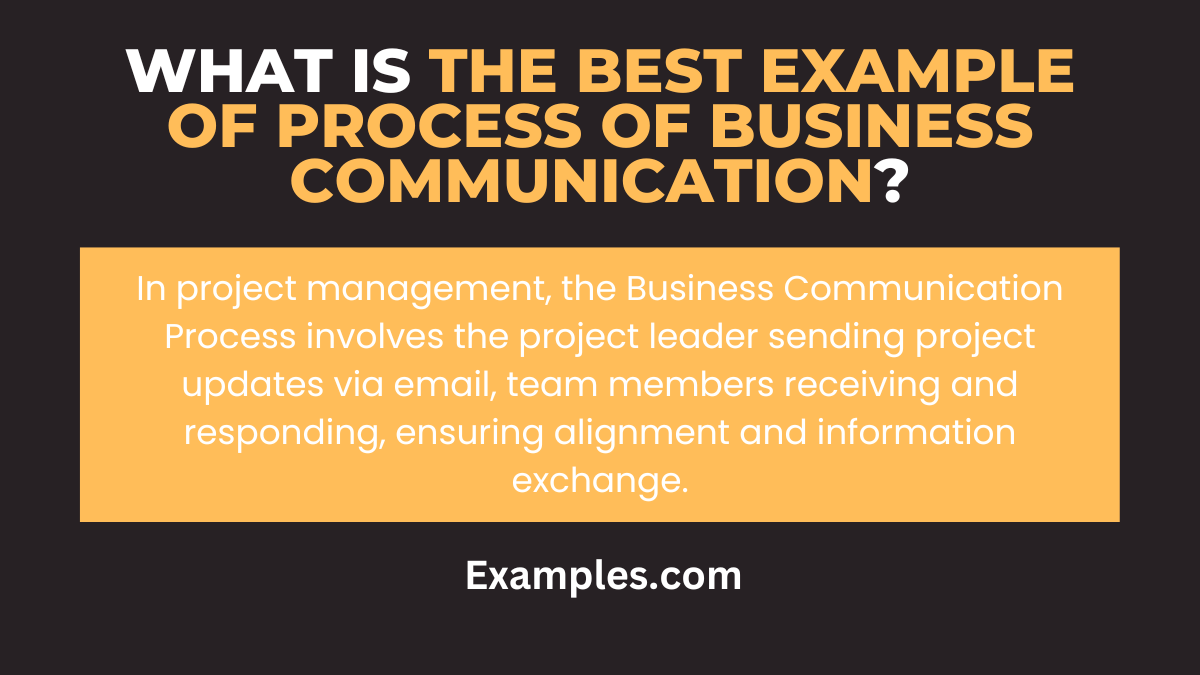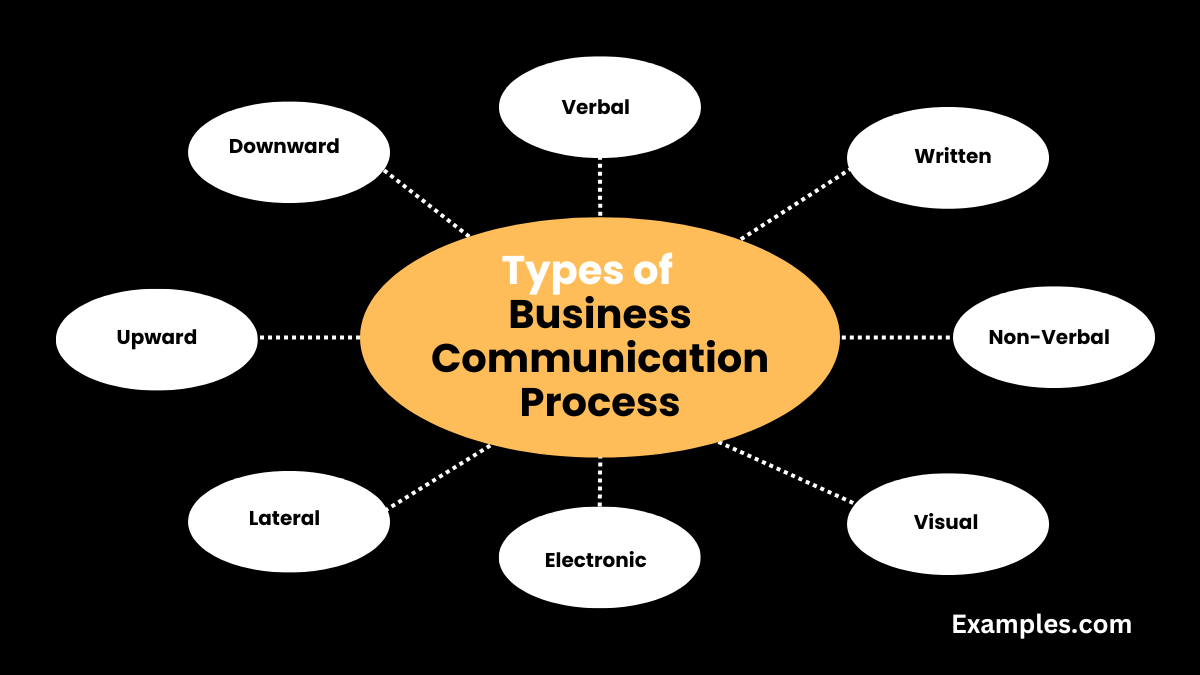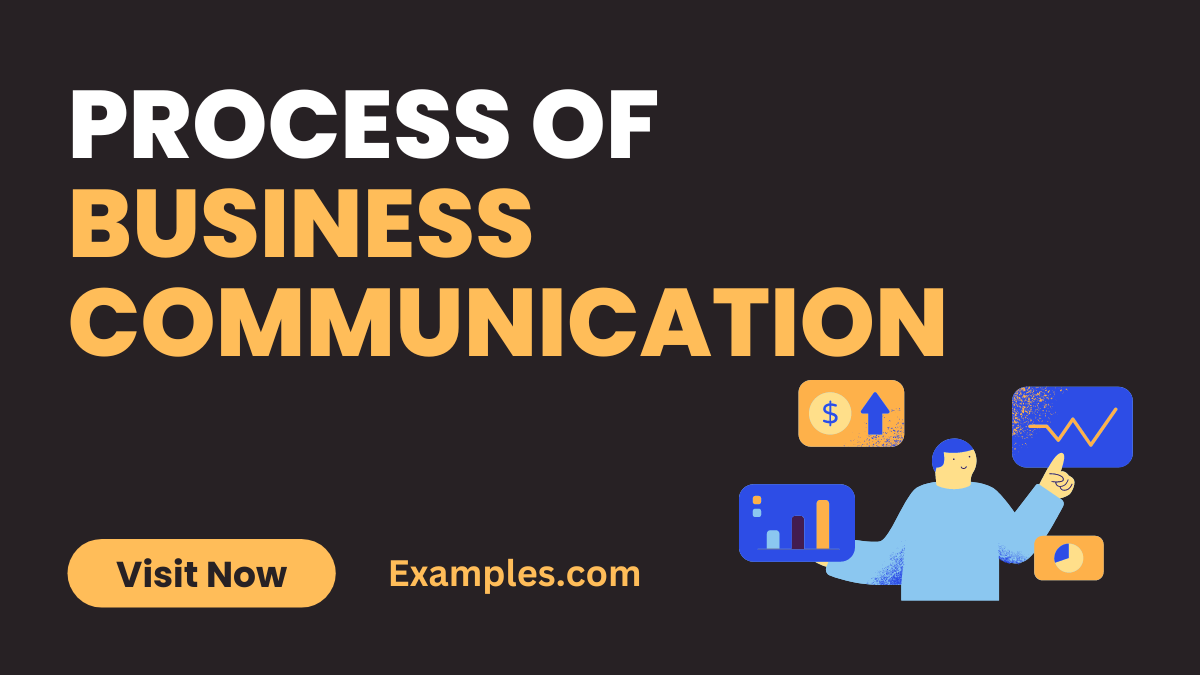Process of Business Communication – 7+ Examples, Tips
“Dive into the Process of Business Communication with our comprehensive guide, brimming with practical communication examples. This resource is tailored to enhance your understanding of effective communication flows within a business context. From the initial conception of a message to its successful reception and response, our guide illuminates each step with real-world examples. Perfect for professionals seeking to refine their communication strategy, this guide combines theoretical insights with actionable techniques for impactful business interactions.”
Download Process of Business Communication PDF
What is the Process of Business Communication?

The Process of Business Communication refers to the systematic way in which information is shared and exchanged within a business setting. It involves several key steps: initiating the communication, crafting the message, choosing the appropriate channel for dissemination (like emails, meetings, or reports), delivering the message, and then receiving feedback or response from the audience. This process ensures that information flows effectively and efficiently, facilitating decision-making, collaboration, and overall organizational success.
What is the Best Example of Process of Business Communication?

A classic example of the Process of Business Communication is seen in project management. Imagine a project leader initiating a communication by drafting an email (crafting the message) about a project update. This email (the chosen communication channel) is then sent to the team. Team members receive and read the email (message reception), and then they might respond with questions or acknowledgments (feedback). This cycle of sending, receiving, and responding illustrates how ideas and information are exchanged in a business environment, ensuring everyone is aligned and informed.
Importance of Business Communication Process
The Importance of Business Communication Process cannot be overstated in the corporate world. It’s the backbone of every successful organization, ensuring that operations run smoothly and efficiently. Here are five crucial points that highlight its significance:
- Facilitates Effective Decision-Making: Clear and concise communication is essential for making informed decisions. When information flows seamlessly through an organization, it ensures that all levels of management are well-informed and can make decisions that are in the best interest of the company.
- Enhances Team Collaboration: Effective communication fosters a sense of teamwork and collaboration. When team members are able to communicate openly and effectively, it leads to better problem-solving, innovation, and a more cohesive work environment.
- Improves Manager-Employee Relations: Transparent communication between managers and employees builds trust and understanding. This is crucial for employee satisfaction, retention, and overall morale within the company.
- Aids in Conflict Resolution: Misunderstandings and conflicts are inevitable in any workplace. A robust business communication process helps in resolving these conflicts swiftly and efficiently, ensuring that they do not escalate and affect the work environment.
- Boosts Organizational Efficiency: Streamlined communication processes lead to reduced errors, less redundancy, and quicker completion of tasks. This efficiency is vital for the smooth operation of the business and contributes to the bottom line.
Types of Business Communication Process

Understanding the different types of business communication process is crucial for effective organizational functioning. Here are eight key types, each playing a vital role in facilitating smooth communication in the business world.
- Verbal Communication: This involves face-to-face conversations, telephone calls, or video conferences. It’s immediate and allows for instant feedback, making it ideal for quick decision-making.
- Written Communication: Emails, reports, memos, and business letters fall under this category. Essential for maintaining records, written communication is ideal for conveying complex or detailed information.
- Non-Verbal Communication: Body language, facial expressions, and gestures during interactions can significantly influence the message being conveyed, often impacting the effectiveness of verbal communication.
- Visual Communication: This includes data visualization through charts, graphs, and slides, enhancing understanding of complex information, particularly during presentations.
- Electronic Communication: The use of technology in communication, such as emails, social media, and instant messaging, is crucial in today’s digital age, offering speed and efficiency.
- Upward Communication: This flows from subordinates to superiors and includes feedback, reports, or requests. It’s vital for managers to understand employee perspectives and workplace issues.
- Downward Communication: Information flowing from management to employees. This includes directives, procedure updates, and organizational announcements, ensuring everyone is informed about company policies and decisions.
- Lateral Communication: Communication among peers or colleagues within the same level of an organization. It encourages collaboration and is often more informal, aiding in team coordination and problem-solving.
Tips for Improving the Business Communication Process
Enhancing the Business Communication Process is key to operational efficiency and overall success. Here are some tips to improve this process:
- Active Listening: Pay attention to what others are saying for better understanding and response.
- Clear and Concise Messages: Avoid ambiguity by being direct and to the point.
- Feedback Encouragement: Foster an environment where feedback is welcomed and valued.
- Adapt Communication Style: Adjust your communication style to suit different audiences and contexts.
- Utilize Technology: Leverage modern communication tools for effective and efficient exchanges.
- Cultural Awareness: Be mindful of cultural differences in global business communications.
- Regular Training: Provide training to employees to enhance their communication skills.
- Effective Meeting Management: Ensure meetings are well-planned, focused, and productive.
- Documentation: Keep records of important communications for future reference.
- Empathy in Communication: Understand and acknowledge the perspectives of others.
By adopting these tips, businesses can significantly improve their communication processes, leading to a more harmonious and productive work environment.
The Process of Business Communication is a critical aspect of any organization, impacting everything from daily operations to long-term strategic planning. This process encompasses a range of activities and strategies that ensure information is effectively transmitted, received, understood, and acted upon within a business context.
At its core, business communication involves exchanging information between people inside and outside an organization. The U.S. Small Business Administration offers insights into why effective communication is crucial for small businesses, emphasizing its role in building relationships and fostering a productive work environment.
Business communication can be internal, like memos and meetings, or external, like marketing campaigns and press releases. Harvard Business Review’s article on Communication provides a deep dive into various communication strategies that can be applied in a business setting.
Effective business communication isn’t just about conveying a message; it’s also about ensuring it’s understood and acted upon. Resources like MindTools offer valuable tips and techniques for developing strong communication skills, which are essential for business leaders and employees alike.
With the digital transformation of businesses, communication processes have evolved significantly. The Massachusetts Institute of Technology’s MIT Sloan Management Review provides an insightful look into how technology is reshaping the way we communicate in the business world.



